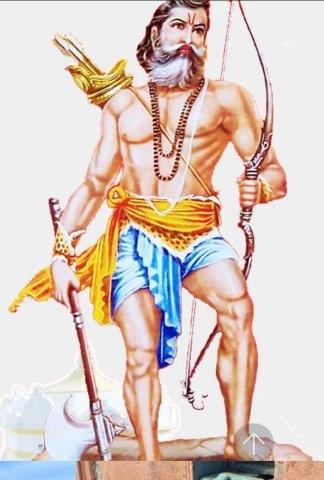Index of Contents
- Introduction
- Shri Parashuram
- Parashuram Kshetras
- Google Map of Parashuram Kshetras and Sri Parashuram Temples
- Parashurama Temples
- Thiruvallam Parashurama Swamy Temple
- Parashuram Kund Mandir, Arunachal Pradsh
- Parashuram Mandir, Kurukshetra
- Janpav, Bhagavan Parshuram Janmasthal
- Sri Parashuram Kothi, Nirmand
- Renuka Devi Mandir, Mathurgad
- Parashuram Temple, Chiplun
- Parashuram Mahadev Cave Temple, Kotra, Rajasthan
- Parashuram Mandir, Trimbak
NOTE Since the Blog is lengthy, If you Click on any Title, you will be taken to the concerned paragragh by the link provided. Also you can return to the Index of Contents for which links have been provided at several places in the Blog.
1.0 Introduction
It is said that Lord Ramachandra connected North-South India, while Lord Krishna connected East-West India, but a few thousand years before that, Lord Parshuram had culturally united the whole of India from the Himalayas to Kanyakumari and from Kashmir to Arunachal. After seeing the temples and places of Parshuram spread all over the country, Parshuram becomes the first symbol of national unity and several of them not known to many .
I started preparing a Google map of 108 Parashurama Shiva Kshetrams (PRST), 108 Parashurama Bhagavathy Temples (PSBT) and 108 Parashurama Dharma Sastha Temples (PSDT). Apart from these temples created by Sri Parashurama, I wanted to mark a few temples dedicated to Lord Parashurama, the sixth incarnation of Lord Vishnu. As I started serious search, I was pleasantly surprised to see more than 300 Temples in India dedicated to Sri Parashurama – most of them in North India.
I have created several Customized Thematic Google Maps of Temples as follows :
- Map of 2500+ Sri Rama Temples with 30 Famous Temples . Web link
- Map of 1000+ Subhramanya temples with 30 Famous Temples , web link
- Map of Sri Parashurama Prathishta Shiva , Bhagavathy and Dharma Sastha Temples and Parashurama Kshetrams (650) with Top 10 Parashurama Temples. Web Link
- Google Map of 300+ Thevara Vaippu Sthalangal . Web Link
- Map of 1000+ Sri Narasimha with 25 Famous temples, web link
- Map of 1500 + Saraswati Temples with 20 Famous temples web link NEW
- Map of 4000+ Worldwide Krishna Kshetrams with 30 Famous Temples Part 1 of 2 Part 2 of 2 NEW !!
- Map of 500+ Ranganatha temples with 30 Famous Temples Part 1 Part 2 NEW !!
Since the Blog is quite lenghty, hyperlinks have been given in the INDEX so that one can navigate to the desired paragraph. At frequent intervals, facility to return back to INDEX also has been given
2.0 Shri Parshuram
अग्रत: चतुरो वेदा: पृष्ठत: सशरं धनु: ।
इदं ब्राह्मं इदं क्षात्रं शापादपि शरादपि ।।
Meaning: Parshuram who is well-versed with the four Vedas and sports the bow and arrow upon His back (that is the one who has the radiance of both the Brahman and the Kshatriya) will destroy evildoers either with a curse or with an arrow.
When fighting, mere use of weapons is insufficient for a seeker. He should have the potential to curse in conjunction with the former. Shri Parshuram single-handedly eliminated the warriors from the earth, circumambulating it twenty-one times. He destroyed the evil Kshatriyas. If He were to destroy all the Kshatriyas on the earth thoroughly even once then not a single Kshatriya would have survived for the second round! However He slew only the evil Kshatriyas. Let us all attempt to destroy the evildoers at least once.
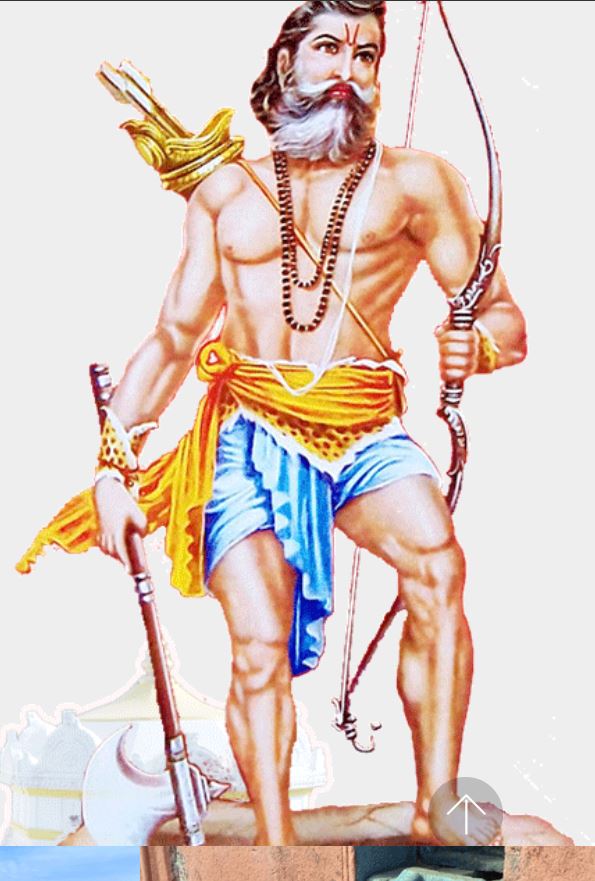
Parasurama, from the Sanskrit parasu (“axe”) and rama (“man”),is the sixth avatar of the Lord Vishnu. The religion of Hinduism teaches that whenever humanity is threatened by extreme social disorder and wickedness, Vishnu will descend into the world as an avatar to restore righteousness, establish cosmic order, and redeem humanity from danger Bhagwan Parshuram, the sixth Incarnation of Vishnu, belongs to the Tretayug, and is the son of Jamadagni and Renuka. Parshu means axe, hence His name literally means Ram-with-the-axe. He was initially named Bargava Rama and later on when he took to great penance ,lasting over 10 years in the Himalayas ( Kailash) , Bargava Rama was renamed Parasurama by Lord Siva himself , who gave him his Siva Dhanus and the Parasu (the Axe) as the boons for his deep penance and devotion and blessed him to achieve his objectives with the help of those gadgets
Even though He was born as a Brahmin, He had Kshatriya (warrior) traits in terms of aggression, warfare and valour. Hence He is said to be a ‘Brahma-Kshatriya’ and one who possesses Brahmatej and Kshatratej. He killed the entire army and King Kartavirya Sahasrarjuna, who took away the divine cow Kamadhenu (which was the chief cause of affluence of the hermitage) forcibly, that belonged to His father Jamadagni. In revenge the King’s sons killed Jamadagni in Parshuram’s absence. Furious at their unrighteous act, He killed all sons of the King and also went on killing all corrupt Haihaya Kings and warriors on the earth 21 times.
He then conducted the Ashvamedha sacrifice, done only by sovereign Kings and gave the entire land He owned to priests who performed the sacrifice (Yadnya).He is a Chiranjeevi (Immortal) who fought the advancing ocean back, thus saving the lands of Konkan and Malabar (Maharashtra – Karnataka – Kerala coastline). The coastal area of Kerala state along with the Konkan region, i.e., coastal Maharashtra and Karnataka, is known as Parshuram Kshetra (area).
He has been a Guru to Bhishma, Dronacharya and later also to Karna. He taught Karna the extremely powerful Brahmastra (a celestial weapon). But He also cursed that the knowledge would be useless to Karna, predicting much in advance that Karna will join the unrighteous Duryodhana in the Kurukshetra war. Such was His love for Righteousness. Also, the Sudarshan chakra (or Sudarshan Vidya) is said to be given by Parshuram to Shri Krushna. The purpose of the sixth Incarnation of Vishnu is considered by religious scholars to be to relieve the earth’s burden by exterminating the sinful, destructive and irreligious kings that pillaged its resources, and neglected their duties.
Parshuram is a martial Shraman ascetic. However, unlike all other Incarnations He is believed to be one of the Chiranjeevis (long-lived ones or immortal ones),. The Kalki Purana states Parshuram will be the martial guru of Sri Kalki, the 10th and final Incarnation of Shri Vishnu. It is He who instructs Kalki to perform a long penance unto Shiva to receive celestial weaponry.
Parasurama,surrounded by settlers, commanded Lord Varuna, God of the waters to recede to make land known as Kerala from Kanyakumari to Gokarna for the Brahmins. He created a temple of worship right after He resurfaced Kerala from the sea. He placed statues of various Deities in 108 different places and introduced martial arts to protect the temple from the evil. To return to Index of contents, Click Here
3.0 Parashurama Kshetras
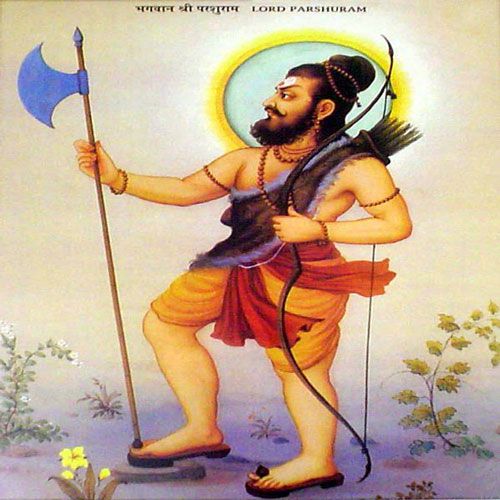
There is much interpretation of Parashurama kshetras. The ancient Saptakonkana is a slightly larger region described in the Sahyadrikhanda which refers to it as Parashuramakshetra (Sanskrit for “the area of Parashurama”), Vapi to Tapi is an area of South Gujarat, India. The area blessed by Lord Parshuram and called “Parshuram ni bhoomi”. The region of Konkan is also considered as Parashurama Kshetra. There is a Parshuram Kund, a Hindu pilgrimage centre in Lohit district of Arunachal Pradesh which is dedicated to the sage Parashurama. Thousands of pilgrims visit the place in winter every year, especially on the Makar Sankranti day for a holy dip in the sacred kund which is believed to wash away one’s sins. Mahurgad is one of the Shaktipeeth in Maharashtra’s Nanded district, where a famous temple of Goddess Renuka exists. This temple at Mahurgad is always full of pilgrims. People also come to visit Lord Parashuram temple on the same Mahurgad.
In Karnataka, there are a group of 7 temples in the stretch of Tulunadu (coastal Karnataka), known as Parashurama Kshetras, (Muktisthalas) namely Kollur, Koteshwara, Kukke Subrahmanya , Udupi, Gokarna, Anegudde (Kumbhasi) and Shankaranarayana.
3.1 Parasurama Shiva Temples (PRST)
108 Shiva Temples created by Lord Parashuram: As per the legend, Lord Parasurama created the land between Gokarna and Kanyakumari. Lord Parasurama the sixth incarnation of Lord Vishnu was the son of Sage Jamadagni and Renuka. As a mark of repentance for Kshatriya Nigraha sin, Parasurama meditated at Gokarna and invoked Lord Varuna (the Lord of the Oceans). Parasurama asked him for a boon. To absolve himself of the sins he had committed, he wanted to donate some land to the Brahmins. There was no land available because he already donated the whole land he obtained by the 21 round Kshatriya Nigraha to Sage Kashyapa. Lord Varuna told Parasurama that he would give him as much land as he wished. He told him to fling his Parasu (axe) from where he stood at Gokarna. The land from Gokarna till the point where the axe landed would be given to him was the boon that Lord Varuna promised him. The throw of the `axe’ from Gokarna to Kanyakumari created Kerala. Parasurama donated this land to the Brahmins and settled Brahmins there in 64 gramams or villages.
32 out of the 64 gramams are in the Tulu speaking region (in between Gokarnam and Perumpuzha) and the remaining 32 gramams are in the Malayalam speaking region(in between Perumpuzha and Kanyakumari) in Kerala.
After the creation of these gramams, Parasurama had consecrated 108 Shiva temples and 108 Durga temples for the well-being and prosperity of the people in Kerala . Among these 216 temples, the Lord Shiva of Gokarnam Mahabaleswara Temple in the north and Goddess Kumari of Kanyakumari temple in the south were considered as the protectors of Kerala. The first Shivalaya created by Parasurama was the Thrissivaperoor Vadakkunnatha Temple and the last one was the Thrikkariyoor Mahadeva Temple.
The names of these temples were given in the famous 108 Shivalaya Nama Stothra. This stothra is written in Malayalam and is anonymous. There are many temples with the same place names. Also some old names do not exist or their names have changed. Details of some of the Parashurama Shiva Temples are given in My Blogs: Kerala Temples I -part 2 of 2 , Kerala Temples II , Kerala Temples III – part1 of 2
UPDATE : Please see my New Blog : Parasurama Shiva temples (PRST) around Ernakulam whicch gives details of more than 20 Parasurama Shiva temples around Ernakulam. .
108 Shivalaya Nama Stothra
| Sreemad Dakshina Kailasam Sree Perooriraveeswaram Sucheendram Chowaram Mathoor Trippangott atha Mundayoor Sree Mandhamkunnu Chowalloor Panancheri Korattiyum Puramundekkatt Avungannoor Kollooru Thirumangalam Trikkariyooru Kunnapram Sree Velloor Ashtamangalam Iyranikkulavum Kainoor Gokarnam Eranakulam Paarivaloor Adattum nal Parippil Chathamangalam Paraparambu Trukkooru Panayooru Vyttila Vaikom Rameswaram randum Ettumanoor Edakkolam Chemmanthatt Aluva pinne Thirumittakkottu Cherthala Kallattupuzha Trukkunnu Cheruvathooru Ponganam Trukkapaleeswaram moonnum Avittathoor Perummala Kollathum Kattakampala Pazhayanooru Perakom Athampally Ambilikkadu Cheranellooru Maniyoor Tali nalum Kodungalloor Vanchiyoor Vanchuleswaram Panjarkulam Chittukulam Alathoor atha Kottiyoor Truppalooru Perumtatta Truthala Thiruvallayum Vazhappally Puthuppally Mangalam Thirunnakkara Kodumboor Ashtamikkovil Pattanakkadu Thashtayil Killikkurussiyum Puthoor Kumbhasambhavamandiram Someswaram cha Vengaloor Kottarakkara Kandiyoor Palayoorumahadeva Chelloor atha Nedumpura Mannoor Truchaliyoor Srumgapuram Kottooru Mammiyoor Parampum tali Thirunavaya Kaarikkodu Cherthala Kottappuram Muthuvara Valappaya Chendamangalm Thrukkandiyoor Peruvanam Thiruvaloor Chirakkalum Ipparanjava noottettum bhakthiyothu padikkuvor Deham nasikkiletheedum mahadevante sannidhow Pradoshathil japichal ashesha duritham kedum Yathra yathra shiva kshethram tatra tatra namamyaham |
The 108 Parashuram Shiva Kshetrams have been marked in the Google Map given below with valuable in puts from References given in the bottom of the blog. To return to Index of contents, Click Here
3.2 Parasurama Bhagavathy Temples (PSBT)
Bhagavathy (Bhagavathi) or Devi is considered as female aspect of the divine Shakthi, as conceived by the Shakta tradition of Hinduism. Shakthi is considered as the female counterpart without whom the male aspect remains impotent. Shakthi is the energy and Shakthi worship is a vital part of Hindu Tradition. Devi is the manifestation of supreme lord “Prakriti” where male aspect of the divine is considered as “Purusha”.
Devi manifests herself as Creator (Durga or the Divine Mother), Preserver (Lakshmi, Parvathy and Saraswaty) and Destroyer (Mahishasura-Mardini, Kali). Devi is worshipped mostly in the form of divine mother. One of the important aspects of the Female divine is the various Shakti Peethas spread all across the country, where over 51 body parts of Devi Sathi, first wife of Lord Siva fell after being broken apart by the Sudarshana Chakra of Lord Vishnu.
Another notable aspect is Mahavidyas, which denotes the supreme knowledge, revelations and manifestations, refer to a group of ten goddesses. They constitute an important aspect of Mahadevi theology, which emphasizes that the Devi has a tendency to manifest and display herself in a variety of forms and aspects. Ten Mahavidyas are: Kali, Tara, Chinnamasta, Bhuvanesvari, Bagla, Dhumavati, Kamla, Matangi, Sodasi, and Bhairavi. Devi is worshipped as Durga, Kaali, Lakshmi, Saraswathy, Rajarajeswari, Parvathy and many more. In kerala, we can see most of the devi temples are woshipped devi as Badra kali (kaali). Though she is eternal, the goddess becomes manifest over and over again to protect the world. Details of some of the Parashurama Bhagavathy Temples are given in My Blogs: Kerala Temples I -part 2 of 2 , Kerala Temples II , Kerala Temples III – part1 of 2
UPDATE Please see my New Blog : Parasurama Bhagavathy Temples (PSBT) around Ernakulam whicch gives details of more than 18 Parasurama Bhagavathy temples around Ernakulam
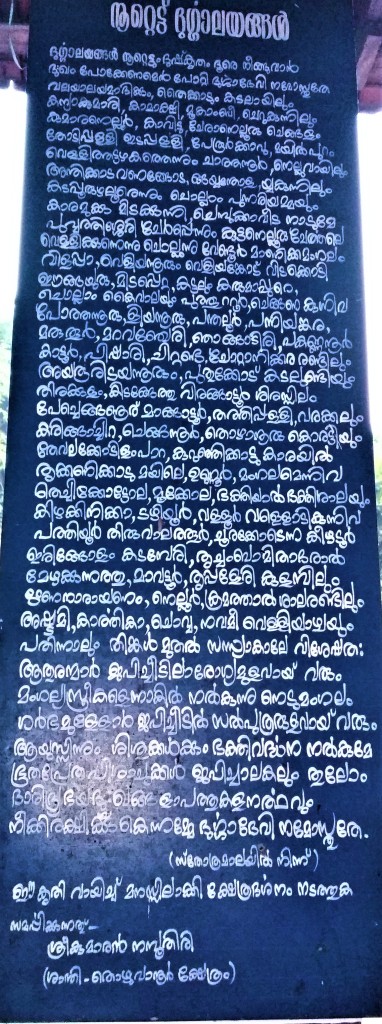
108 Bhagavathy Temples (PSBT) created by Lord Parashuram : list in Malayalam seen at Thozhavanur Bhagavathy temple . The list mentions only names of the places – which have changed with time – some multiple places with same name exist – So based on the available information, I have marked in Google Map the PSBT temples. I am open to correction if anyone gives suggestions. References given in the bottom of the blog
3.3 Parasurama Dharma Sastha Temples (PSDT)
108 Dharma Sastha Temples (PSDT) created by Lord Parashuram Lord Parasurama who was the founder of Kerala is supposed to have consecrated 108 , Sastha(Not Ayyappa) temples in Kerala.
From ancient times, Lord Sastha has been worshipped in Kerala. When Kerala was created by Parasurama, he wanted the supreme divine force to protect his land. He did penance on Lord Sastha; the Lord appeared
“rakshitwam kEraLam rAjyam bArgavEna mahAtmana: prArtitOham vasishyAmi tatArtham kEraLE drudham”
– Lord Sastha promised him to stay in the land of God’s own country and instructed Parasurama to build as many temples, so that He can stay there. Thus Parasurama brought Sastha for the protection of the land and the people.and hence the presence of numerous temples dedicated to Sastha.
Certain places with dense growth of trees are considered sacred, and are the domiciles of the Lord. Those places where Sastha in various forms like Dharma Sastha, Bala Sastha,Vettakkorumakan etc. are called as Kaavu. Legends like Ayyappan Theeyattu and Keralotpatti says that Parasurama has constructed 108 Sasthakaavus. The list is given below. as per the Ayyappan Thottam Paattu References given in the bottom of the blog
List of 108 Sastha Temples in Kerala
1. Thrikkunnapuzha Dharmasasthavu,Alappuzha 2. Thiruvullakkavu Sasthavu,Thrissur 3. Aryankavu Dharmasasthavu,Kollam 4. Chambrakulangara Ayyappan, 5. Chamravattam Sasthavu,Malappuram 6. Achan Kovil Darmasasthavu,Kollam 7. Kulathupuzha Sasthav,Kollam 8. Kolakkottiri Ayyappankavu,9. Sabarimala Sreedharma Sasthavu,Pathanamthitta 10. Kizhakedesam Sasthavu,11. Meenachil Sasthavu, 12. Arakkulam Dharmasasthavu,Iddukki 13. Mattil Sasthavu, 14. Cheruthazhathukavu Sasthavu, 15. Kalleli Sasthav,16. Nandikeswarankavu Sastha, 17. Thakazhi Dhramasasthavu,18. Chakkamkulangara Dharmasasthavu, 19. Aarattupuzha Sasthavu,Thrissur 20. Manaloor Ayyappan Kavu,21. Manakodi Sasthavu, 22. Edathra Sasthavu,23. Edathuruthi Ayyappan Kavu, 24. Kanyakulangara Dharmasasthavu,25. Nettissery Sasthavu, 26. Mulankunnathu Kavu Darma Sasthavu,27. Udalakkavu Sasthavu, 28. Kodumpu Ayyappa, 29. Manakkadu Dharmasasthavu, 30. Thykkadu Sasthavu, 31. Akamala Sreedharma Sasthavu,Thrissur 32. Thottakkare Molukurussy Ayyappankavu,33. Ayyankuzhikkavu Sasthavu,34. Kollankodu Pulikkodu Ayyappan, 35. Cherpulasery Ayyappan Kavu,Palakkad 36. Poonjal Darmasasthavu,37. Punchapadam Pulinkkavu Ayyappa,38. Theeyadikkavu, 39. Nagalassery Ayyappankavu, 40. Mundamuka Ayyappan,41. Thichur Sasthavu, 42. Malamakkavu Ayyappan, 43. Nangulam Sasthavu,44. Neriyamangalam Sasthavu, 45. Aanaparambu Daramasasthavu, 46. Thayankavu Sasthavu, 47. Perungottukavu Sasthavu, 48. Kothakulangara Sasthavu,49. Mangalam Ayyappan Kavu, 50. Chemeli Dharmasasthavu,
51. Pottankkavu, 52. Thiruvarchanamkunnu, 53. Malamakkavu Ayyappan,54. Thrikkalathur Sreeraman, 55. Vayaskkara Dharmasasthavu,56. Narayanamangalam Ayyappankavu, 57. Sakthikulankara Sasthavu,58. Ayyappanpara Sasthavu, 59. Manalithara Mullapallikavu,60. Kuttoor Sasthav,61. Pattikkadu Dharmasastha,62. Markkadakkavu Sastha,63. Koodapuzha Marathopalli Sasthav, 64. Neervilagam Dharmasastha,65. Kaattuvalli Dharmasastha, 66. Karukuttikkavu,67. Kozhikkal Kandan Sasthavu, 68. Ezhinjillam Sasthavu, 69. Kannanallur Sasthavu, 70. Kutiyothu Temple,71. Kannadiparambu Dharmasasthavu, 72. Chethamangalam Ayyappan,73. Chovvara Sasthavu, 74. Edaneer Vishnu, 75. Kolasserykavu Sastha,76. Paduvilakkavu Sastha, 77. Kaarakkattu Sreedharma Sasthavu,78. Paandangari Dharmasastha, 79. Rampuram Sasthavu,80. Kanimangalam Sasthavu,81. Elampalli Madathil Dharmasasthavu, 82. Cheerappanchira Mukkalvattam Ayyappa,83. Vyasachalam Sasthavu, 84. Karthyakulangara Sreedharmasastha, 85. Thechikkottukavu Sastha, 86. Mupuramkavu Sreekandansasthavu,87. Varamsasthamkotta Temple, 88. Pullukulangara Darmasasthavu, 89. Thrikkadambu Temple, 90. Chathankottakavu,91. Kodannoor Sasthavu,92. Mangattu Kavu Ayyappan,93. Velupilli Dharmasastha, 94. Rarothu Ayyappa,95. Thrivuvaniyoor Temple,96. Malamel Temple, 97. Areswaram Sasthavu, 98. Karimpuzha Sreeraman Temple,99. Chathannoor Bhoothanathan (Siva Temple), 100. Ponnabalamedu, 101. Koovapalli Narkkalakavu, 102. Mundarakodu Ayyappa,103. Eramam Muthukkattukavu Ayyappan,104. Kochambalam,105. Erumeli Dharmasasthavu,Kottayam 106. Kezhoor Dharmasasthavu, 107. Niram Kaithakkotta Sasthavu, 108. Arangavu Sasthavu
3.4 Parashurama Kshetras of Karnataka:
In Karnataka, there are a group of 7 temples in the stretch of Tulunadu (coastal Karnataka), known as Parashurama Kshetras, (Muktisthalas) namely Kollur Koteshwara, Kukke Subrahmanya, Udupi, Gokarna, Anegudde (Kumbhasi) and Shankaranarayana. The details of the temples and Program plan to visit them can be seen in my blog To return to Index of contents, Click Here
4.0 Google Map of Parashurama Kshetras and Sri Parashurama Temples
Embedded Interactive Google map of 108 Shiva temples, 108 Bhagavathy Temples, 108 Dharma Sastha Temples, 7 Muktisthalas of Karnataka created by Sri Parashurama and over 300 Temples dedicated to Lord Parashurama is given below :
5.0 Parashurama Temples
There are more than 300 temples dedicated to Sri Parshurama in India,Details of some temples dedicated to Sri Parashurama are given below To return to Index of contents, Click Here
5.1 Thiruvallam Parasurama Swami Temple
Thiruvallam Parasurama Swami Temple, Thiruvallam, Thiruvananthapuram, Kerala 695027; Thiruvallam Parasurama Swami Temple is situated on the banks of Karamana River near Thiruvallam, 3 kms from Thiruvananthapuram, Kerala and is 3 km from Attukal Temple 2 km from Pazhanchira Devi Temple and 1km from Sree Alukadu Devi temple. The temple is considered a protected monument by the Archaeology Department of Kerala .It is a 2000-year-old temple
The temple structure is built in black granite, and was reconstructed by the Chera king Athiyaman Perumal. .It is famous for Balitharpanam (a tribute to ancestors). As part of the Bali ritual, devotees make offerings to the departed souls, with a dip in the holy waters.
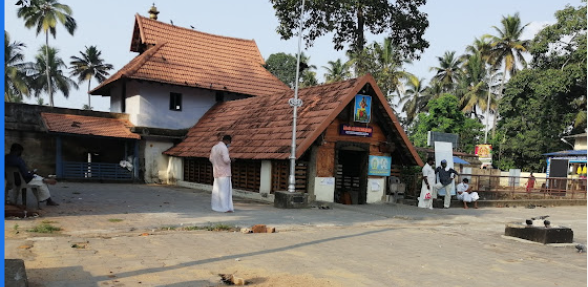
As per Legend Lord Parasurama is the creator of Kerala and the temple dedicated to him is considered as a holy place for his devotees. During the karkidaka vavu day (a holiday in the Malayalam month of karkidakam) as part of the bali (a religious ritual), devotees pay homage to the departed souls of forefathers, after taking a dip in the holy water.
Distraught at having had to kill his mother on his father’s orders, Parasurama is believed to have prayed fervently to the Lord Shiva whoadvised him to proceed to the banks of Karamana and offer balitharpan(homage to the departed soul), which he did. This is how Thiruvallambecame hallowed ground for offering balitharpan. Adi Sankara, the greatHindu philosopher of the 8th century, is also said to have worshipped atthe temple and offered balitharpan for his mother..
It’s believed that the temple was built by Vilwamangalam Swamy, anardent devotee of Mahavishnu. During the course of his pilgrimage, theSwamy chanced to come to this serene spot where he felt theunmistakable presence of Parasurama, following which, he built thetemple and installed him as the deity. The present temple was builtaround the 12th-13th centuries by the legendary Chera king Athiyaman Perumal.
The sanctum sanctorum bears the idol of Parasurama with his axe.Thiruvallam is one of the few temples where the Trinity (trimurtis) ofthe Hindu religion – Lord Vishnu, Lord Siva and Lord Brahma — areenshrined. Other deities like Ganapathy, Sree Murugan, Bhadrakali(Mahishasuramardini), Krishna, Vyasamuni, Matsyamurthy (the fi shincarnation of Vishnu) and Nagas are also installed here. It is believed that if the balitharpan is done in the presence of Parasurama,the souls will defi nitely be freed of their wordly sins.
Karkidaka Vavu is the most solemn day when devotees swarm the placein the hope of freeing their beloved dead from the bondage of this world.Special prayers are offered and people return comforted in the beliefthat their dear ones are now in total unison with the Maker.
During the balitharpan, the devotee wears a ring made of darbha (half a grass) on the ring fi nger. Sacred items like sesame seeds, flowers, darbha, sandalwood and raw rice are placed on a plantain leaf. They arethen taken out and left on the sacrifi cial stones. Articles needed for the rituals are available at the bali mandapams.
Devotees believe that the dead take the form of crows and clean theleaves of all the food. The emptied leaves are taken to the bathing ghats and floated down the river. After taking a dip in the river to purify their bodies, the devotees return to the temple.
The temple is located at a thriveni sangamam, meaning the confluence of three rivers – the Karamana, Killi and Parvathi puthanar. (The Hindus regard such a confluence as a sacred place and also as the ideal spot to pay homage to departed family members and ancestors.)
5.2 Parshuram Kund Mandir , Arunachal Pradesh
Bhagwan Parshuram Kund Mandir, Parsuram Kund, Arunachal Pradesh 792102 Bhagwan Parshuram Kund Mandir is located at , Parsuram Kund, at Telu Shati/Tailung area of Mishmi plateau in the lower reaches of the Lohit River, approximately 48 kms via Tohangam from Tezu, the Headquarters of Lohit District in Arunachal Pradesh. hills district comprising Mishmi inhabited areas. It is a famous holy place of worship which is steeped in Hinduism and is much venerated by them. It falls within the Kamlang reserve forests and is surrounded by dense forests.
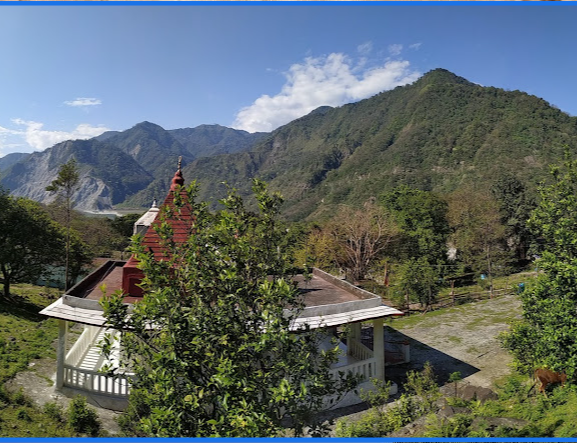
As per the legend Lord Parashuram the sixth incarnation of Lord Vishnu, on the orders of his father Rishi Jamadagni, beheaded his mother Renuka with his axe. Since he had committed one of the worst crimes of killing one’s mother, the axe got stuck to his hand. His father pleased with his obedience decided to give him a boon to which he asked for his mother to be restored back to life. Even after his mother was brought back to life the axe could not be removed from his hand.
This was a reminder of the heinous crime he had committed. He repented for his crime and on taking the advice of eminent rishis of that time, he arrived at the banks of Lohit River to wash his hands in its pure waters. It was a way to cleanse him of all the sins. As soon as he dipped his hands into the waters the axe immediately got detached and since then the site where he washed his hands became a place of worship and came to be known by sadhus as Parashuram Kund.
Parshuram Kund is surrounded by beautiful sky-high mountains, pristine streams, dense rich forests and lush green hills . One can also go for trekking, boating and camping amidst its beautiful expanse. The pond is huge with a diameter of 150 ft. The water of the pond became red because of the blood on the Parshu. The water is very deep. The original Parshuram temple near the pond is believed to have been destroyed by earthquakes and other natural events. Another temple is recently built in 1972
The focal point of Makar Sankranti which falls on 14th and 15th January is the Parshuram kund Mela which is celebrated in Telu Shati/Tailung area in Lohit District and which is a regular event since 1972. The Mela is held both at District Headquaters,Tezu and Parshuram kund/ Telu Shati/Tailung area which is 199 kms from Dibrugarh, the nearest Airport. During the Mela held from 1st week of January to 31st January, pilgrims and common visitors from all over the country and Nepal visit the place for sightseeing and holy dip at the famous Lohit River. To return to Index of contents, Click Here
5.3 Parshuram Mandir Kurukshetra
Shree Bhagwan Parshuram Mandir Evam Sanskrit Ved Pathshala, Unnamed Road, inside the campus of Brahman Dharmshala, Thanesar, Haryana 136118 Shree Bhagwan Parshuram Mandir is located inside the campus of Brahman Dharmshala, Thanesar, Haryana. There is also a Sanskrit Ved Pathshala located in the campus.Kurukshetra in Haryana is a known as the battle field mentioned in Mahabharata where Kauravas fought the battle with Pandavas. There are five lakes in the region out of which Brahmasarovar has links with Lord Parshuram’s life. It is properly built and is 2km long and 1km wide.
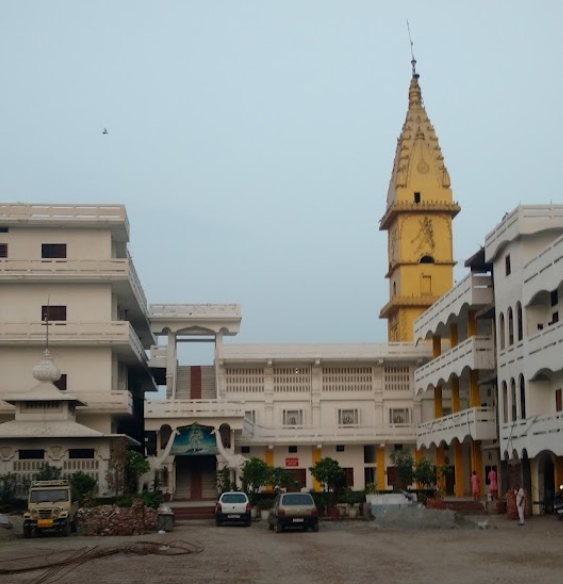
There is a huge, south facing statue of Parshuram in front of the lake. The idol has aggressive stance. There is a Parshuram Dharmashala (a place to stay for the devotees). On the east of the place there is another lake Sannihat lake with a recently built Parshuram temple.
Places to see in Kurukshetra are : Bramha Sarovar, Jyotisar birthplace of Bhagavat Gita, Bhadrakali Temple, Sthaneswar Mahadev Temple, Sannihit Sarovar, Lakshminarayan Temple, Kalpana Chowla Memorial Planetarium, Sri Krishna Museum etc.
5.4 Janapav- Bhagwan Parshuram Janam Sthal
Janapav- Bhagwan Parshuram Janam Sthal, Mumbai – Agra National Hwy, Janapav Kuti, Madhya Pradesh 453661 It is believed that Lord Parashuram was born on (Janam Stha) the hill of Janapav, 28 km from Indore Madhya Pradesh .Janapav also known as Janapav Kuti is a mountain at altitude of 854m from sea level & highest peak of vindhayanchal range. a famous tourist place The mountain is surrounded by dense forests. The place is quite popular among trekkers for its scenic beauty and adventurous routes. The place is also famous for the fair that is held here every year on Kartik Purnima which is the first full moon after Diwali.
Parshuram’s father was the ashram of sage Jamadagni. It is said that in ancient times, Mother Renuka lived on Renuka mountain in Mundi village near Indore. Parshuram was the fifth son of sage Jamadagni and Renuka, one of the sage Jamadagni Saptarishi. Parashurama appeared on earth as the 6th incarnation of Lord Vishnu. Parashurama was a real example of bravery.
Janapav has a very ancient Shiva temple, which is known as Janakeshwar temple. It is said that Maharishi Jamadagni, the father of Lord Parashurama, had consecrated the life of Janakeshwar Shivling in Tretayuga. People also have faith in the ancient Brahmakund here. The temple was renovated in 1960 by Guru Maharaj Madhavananda. After that in 2008, on the demand of Mahant Badrinand, Chief Minister Shivraj Singh Chouhan got the Brahmakund renovated.
Janapav is also called the origin of seven rivers. 7 rivers Choral, Moral, Karam, Ajnar, Gambhir, Chambal and Utdia rivers originate here. Rivers flow in two directions from the holy shrine Janapav. These rivers meet the Yamuna and the Ganges through Chambal and drain into the Bay of Bengal. The water of Karam river is found in Narmada. Every year a fair is held here in the month of Kartik. There is a plan to build a pool at the origin of these rivers originating from here.
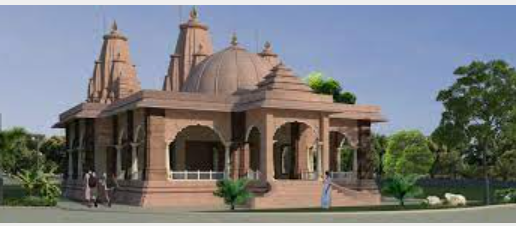
The construction of the temple is also going on in Janapav for the last four years. Parashuram temple is being built in four thousand square feet. On the lines of Ram temple to be built in Ayodhya, red stones have also been brought from Rajasthan for Parashuram temple. The height of the temple will be about sixty feet and its cost will be about five crore rupees. Apart from a residential complex in the temple, a cowshed has also been built in about three thousand square feet. Not only the people of the Brahmin community, but all the societies have deep faith on this pilgrimage site. People of tribal society also come here for regular worship.
The Parshuram temple is huge and has ivory idols of Rishi Jamadagni and Renuka Mata as well. The Janakeshwar Temple, Panchmukhi Maruti temple and Bhairavnath temple founded by Rishi Jamadagni are also situated in the premises. A pond by the name Brahma Kund is flocked by devotees attending the festivals on Maha Shivaratri, Parshuram Jayanti, Shravan Somvar , Sarvapitri Amavasya and Kartik Paurnima. This place is especially visited by tribals in the region.
Also another place called janmasthan : Parshuram Janambhoomi Teertha Kshetra, Renuka Ji, Himachal Pradesh To return to Index of contents, Click Here
5.5 Sri Parshuram Kothi, Nirmand
Sri Parshuram Kothi, Nirmand, Himachal Pradesh 172023 Parshuram Temple at Nirmand, the largest village in Himachal Pradesh, is around 19 km from Rampur. The temple is dedicated to the Parashurama avatar of Vishnu. The word ‘Nirmand’ is regarded as a derivative of ‘Nir – mund’, or without a head. For some still unexplainable reason, Nirmand has also been a major centre of the bhunda, a ritual of ‘human sacrifice’ that follows a cycle of approximately 12 years. Today a goat is used instead, though local fascination with the heady tradition has not lessened.
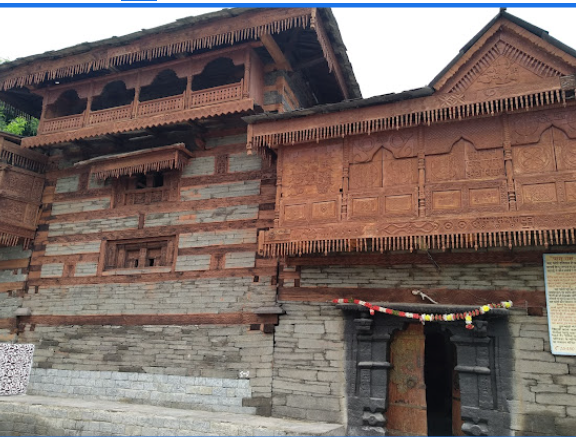
Nirmand is a very important place from the interiors of Himachal. It is known by this name because it at this very place that Parshuram beheaded his mother Mata Renuka on the orders of his father. It is 200 km away from Shimla. The place is adorned by several temples. In a village near the last mountain there is a Parshuram temple, located centrally. The temple is built with carved wood and follows the Kangra architecture style.
The temple boasts of several sections like Sabha Mandap (Outer pandal), Antaral (Inner sanctum) and Garbhagriha (Innermost sanctum). The temple has a surrounding wall as well. The idol is made of platinum. It is believed to have been adorned by diamonds and other precious stones. However, it was stolen but found again. But now it was without the jewellery. The temple also has idols of Uma-Maheshwar and Shri Vishnu-Lakshmi.
Overlooking the Sutlej valley in the lesser-known Kullu district, This village has been in existence since the early Vedic period, making it one of the oldest rural settlements in India. A number of ancient stone and wooden temples dating back to the 6th and the 7th centuries A.D. speak of Nirmand’s religious and historical importance. For this reason it is often called the “Kashi of the Himalayas.”
A solid wooden door leads into a grassy compound, known as Parshuram kothi, with the main shrine towards the end and store rooms to the left.
There are some carvings on the compound walls, relief works on its wooden balconies, and stone images of deities set outside the shrine, but the temple is otherwise remarkably austere.To the right of the entrance is a small hollow, called the Pandava Gufa. It is believed that the Pandava brothers and their wife spent part of the last year of their exile here.
The main murti of the temple is taken out only during the Bhunda festival, was gifted by a king of Kashmir in 900 AD. The murti of Parashurama has three heads, the central one with a diamond in its forehead. It is kept in a store room along with treasures such as a 16 kg axe and jewelry.Outside the pent roof, two storied compound there is a smaller shrine to Bhairava, leaning against the walls of the larger temple.
It is during the Bhunda festival that the Parshuram Bhandar is opened and the artistic wealth of the temple is displayed to the public. The prized objects include a copper plate dating to the 6th-7th century A.D. and the famous brass bust of Sujanu Devi. The inscription on the bust dates it to 1026 AD. Many stone sculptures dating back to the 6th-7th century have also been discovered from the bhandar. Two of them, a stone sculpture and a stone pillar, are displayed in the temple courtyard.
Narrow streets – some paved with concrete, some with flagstones, some with tarmac and many still of dusty mud – wind their way through the few acres that form the core of this village that may well have been inhabited for a millennium-and-a-half.
The path to the kothi of Parshurama slices through the heart of the village. The kothi, ‘residence and temple’ of Parshurama is a remarkable structure that has a pent-roof and age-old lines of wood and intricate carvings that make its façade. Here lies the mythical axe of Parshurama and several other items of dress and armour that are attributed to him – and are only taken out of their cave at the time of the “bhunda” ritual. Just outside this precinct is a tiny – but remarkably elegant – temple of Shiva that is barely the height of a child, but has perfectly classical proportions..
5.6 Renuka devi mandir, Mahurgad
Renuka mata mandir, Renuka devi mandir, Mahurgad, Maharashtra 431721 Renuka mata mandir is located at Mahurgad, Maharashtra 130 kms from Nanded. There are three mountains in Mahur. The first one and most known is having Renuka Mata Temple, who is mother of the god Parshuram. Other two are called Datt Shikhar and Atri Anasuya Shikar Temple’s. Mahur has a sacred temple to Renuka Mata, which is considered one of the three and half Shakti Peethas in the state.

Mahur is the abode of the goddess Renuka, mother of Parshuram, an incarnation of Lord Vishnu. It is believed that the temple has been constructed by a Yadava king of Devgiri about eight or nine hundred years ago. The temple of Renukadevi is located on a hill top. There are carved caves in the hills around Mahur.Mahur is a pilgrim Centre of great significance. Renuka Devi Temple is considered to be one of the Shaktipeeth of Maharashtra. The temple of Goddess Renuka Devi is situated on a hillock abounding in natural beauty at a distance of about 2.415 km. from the village of Mahur.On the day of Dasara every year a very big fair is held in honour of Renukadevi.
As per the Legend Renuka was the daughter of the king Renu of Kubaj country and the wife of the sage Jamadagni. When the king Sahastrarjuna paid a visit to Jamadagni in his abode, he was taken by surprise by the hospitality of the sage. When asked about the same, the sage told him that it is all because of the Kamadhenu, i.e., cow that fulfils the desires of the owner given to him by Indra, the king of the Gods.
Thinking that if the Kamadhenu was in his possession he would be able to maintain his vast army easily, the king Sahastrarjuna tried to seize the Kamadhenu from the sage by farce when his request to hand over the Kamadhenu to him was turned down by the sage. In the scuffle that ensued the sage died and his wife Renuka was injured due to 21 wounds she had received at the hands of the king. At this juncture many soldiers appeared on the scene from the body of the Kamadhenu by divine magic and farced the king to retreat.
On coming to know of the above incident Parasuram, the son of Jamadagni who rushed there vowed to defeat and punish the king 21 times. His mother asked him to cremate his father. He carried his father and mother to Mahur and cremated his father there. His mother became a sati.
The religious rites were conducted on this occasion by the God Sri Dattatreya himself. However, after everything was over Parasuram was stricken by grief and at this time a voice from the heavens told him that his mother would came out from the earth but he should not look behind. Being eager to see his mother, Parasuram just saw behind far a fraction of a second to find the mother’s face aver the earth. The upper facet is the present upper facet of the Renukadevi.
Renukadevi is adorned with various gold ornaments such as the golden flowers to be used as earrings, gold garlands (putal mal candrahar, jaymal, etc.), nose-ring (nath), etc.
There are many other temples in Mahur like Rishi Jamdagni Temple, Lord Parshuram Temple, Kalika Mata Temple, Devdevshwar Temple, and also the Caves called Pandav Leni. To return to Index of contents, Click Here
5.7 Parshuram Temple, Chiplun
PARSHURAM DEVASTHAN, Sansthan Shri Bhargavram Parshuram At post, Taluka, Parshuram, Chiplun, Maharashtra 415605 PARSHURAM DEVASTHAN, Sansthan is Located 9 kms from Chiplun Maharashtra The Konkan land is the land created by Parshuram and is considered to be the ‘land of God’. The beautiful nature here, the proximity of the endless sea and the peaks of the Sahyadri are breath taking.
Lord Parshuram, is considered to be the sixth incarnation of Vishnu. The temple of Lord Parashuram at Parashuram was built by Chalukya dynasty emperor Pulakeshi . Ashwamedha Yajna was performed at Chiplun. The city of Chiplun was established as a sacrificial village for this yajna. Rigvedi and Yajurvedi sages were brought by sea from South Gujarat. He later became known as Chittapavan,
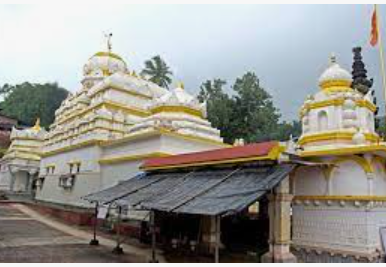
The biggest sacrifices like Ashwamedh and Rajsui were performed. At that time, the temple of Lord Parshuram was installed near the Yajna land as a Yajnapati, along with the temple of Vedavasini or Vindhyavasini Goddess, which contains all the four Vedas. Kartikeya is known as the protector of the sacrificial land. The temple of Kartikeya was built along with Lord Parashuram and Vindhyavasini near the place of sacrifice. The temples of these three deities were built north of Chiplun for the Ashwamedha Yajna mentioned above in Chiplun. Jog says.
These three temples were repeatedly demolished and rebuilt like other temples in Konkan during the later invasions of various Muslim powers. However, the antiquity of the idols will be noticed.
Shrikshetra Parashuram is considered to be the abode of Lord Parashuram. Lord Parshuram defeated the arrogant Sahasrarjuna who had killed his father Maharshi Jamadagni and the small and big powerful kings who were following him on the battlefield and laid down his arms. He dedicated the conquered land to Kashyap Muni to be handed over to intelligent and cultured rulers. As it was not proper for him to live in the donated land himself, Parshuram requested him to step back a little to make the Athang Sagar on the Konkan coast available for his residence.
Sagara did not accept the request, so Parshuram shot an arrow and pushed the sea back. A new territory was created from Gujarat to Kerala and Parashurama chose Mahendra Parvat for himself for penance and that mountain is Shri Kshetra Parashuram near Chiplun. Parshurama chose the Mahendragiri peak (in the village also named Parshuram) from this land for his permanent residence. This is the place where the temple is located. It is believed that Lord Parshurama leaves for the Himalayas at sunrise, does tapa in the Himalayas and returns to the temple at sunset Therefore, this pilgrimage site has a pleasant atmosphere and has become a popular place of worship. The temple is managed by the Shree Dev Bhargavram Devasthan Trust
5.8 Parshuram Mahadev Cave Temple Kotra, Rajasthan
Shree Parshuram Mahadev Cave Temple ( Main ) Sadri – Rajpura – Parshuramji Cave Rd, Kotra, Rajasthan 306702 Shree Parshuram Mahadev Cave Temple ( Main ) Sadri – Rajpura – Parshuramji Cave Rd, Kotra, Rajasthan. Shree Parshuram Mahadev Cave Temple ( Main ) Sadri – Rajpura – Parshuramji Cave Rd, Kotra, Rajasthan. Lord Shiva is worshipped in the form of Shivlingam in this temple. The lingam exemplifies as eternal energy of Lord Shiva and is often seen with yoni which symbolizes the Shakti (Power) of the womb.
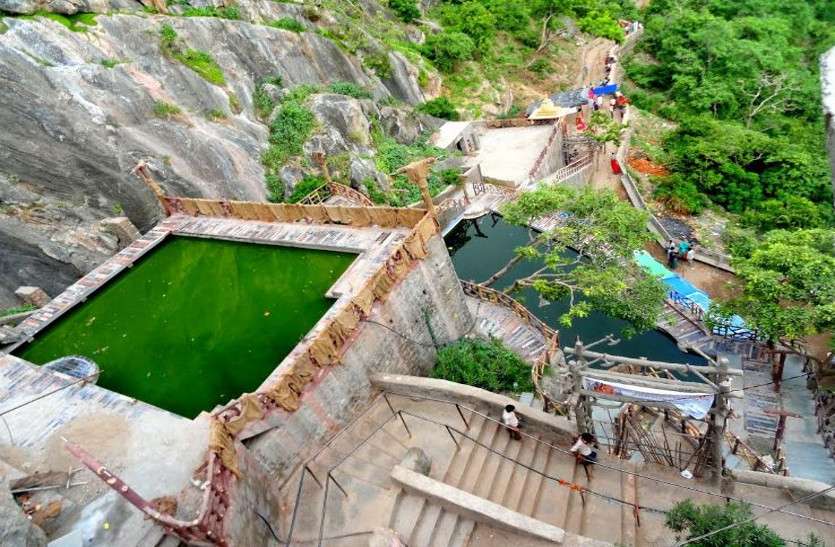
Shree Parshuram Mahadev Temple is a cave Shiva temple located at border of Pali district and Rajsamand district of Rajasthan state.The main cave temple comes in Rajsamand district, whereas Kund Dham comes in Desuri Tehsil of Pali district. It is 10 km from famous famous Kumbhalgarh fort and 160km from Jodhpur. Access from lower altitude Sadri side is easier; however, access from Kumbhalgarh, Rajsamand, Nathdwara or Udaipur involves a little trekking downhill from a place designated as parking for the temple There are 500 stairs to reach down to the ancient cave from Sadri side.
It is said that Parshuram, the sixth avatar of Lord Vishnu and one of the Sapta Chiranjeevis made the cave with his axe and used to worship the lord Shiva at this serene place in the foothills of the Aravalis mountain range. The cave 4000 feet above sea-level, has naturally made figures of Lord Ganesh and Lord Shiva and also has nine Kunds which never go dry. This is one of the pleasant and delightful places.Local people call it Amarnath Dham because just as Lord Shiva resides in Amarnath Dham located in Kashmir, in the same way Shiva’s monolithic abode is here too.
It is said that it was only through the penance performed here that they received the bow and the Akshaya quiver from Lord Shiva. The arrows of that quiver were never ending and the bow always aimed accurately. It was from here that he got his famous Farsa. This entire cave is built on a single rock. Gomukh is made on the Shivling, due to which the water stream falls on Lord Shiva The figure of a demon also remains on the rock in the cave. It is said that Parashurama had killed this demon with his ax.
In the picturesque hills of Aravali, the Parshuram Mahadev Cave temple was built by Parshuram himself by cutting the rock with his Axe. To reach this cave temple, one has to travel 500 steps. Inside this cave temple, where Parshuram, the sixth incarnation of Vishnu, had performed rigorous penance for many years of Lord Shiva. On the basis of austerity, he had received Dhanush, Akshay Tumar and Divya Charias from Lord Shiva.
The entire cave remains in the same rock. The pattern above is like the cow’s thong. Natural self-geographical goofing is made right above the gender, from which there is continuous natural burning on Shivling. It is believed that Lord Parshuram, who was made under the main Shivling, had ever had austerity on Shiva’s harsh penance. In this cave, the shape of a monster remains on a rock. Parasurama was struck by his fists.
According to a belief associated with this place, Lord Badrinath’s cupboard can open the same person who has visited Parshuram Mahadev.
It is said about Shivling that even after offering hundreds of litters of water on it, it absorbs it because it has a hole. Whereas when milk is offered, it does not fit into the holeThe reason for this remains a mystery to the people till date. To return to Index of contents, Click Here
5.9 Parashuram Mandir, Trimbak
Parashuram Mandir, Panch Ali,, 94, Panch Aali Rd, Trimbak, Maharashtra 422212 Parashuram Mandir is located at Trimbak, Maharashtra at a distance of 30 kms from Nashik. This well known pilgrim place near Nashik and Trimbakeshwar is one of the 12 Jyotirlingas.
This place was chosen by Lord Parshuram for meditation. There was an ancient temple of Parshuram. Presently, there is a temple 125 years old. The idol is made in vaishnav style with four hands. There is an idol of Lord Narayan. The Stone tablets found at the place speak of the glory of the Emperor Satvahan. The temple is believed to be constructed at the time of Yagnas performed by the Kings
Bhagwan Parashuram Temple in Trimbakeshwar is worshipped in the form of a child. The vigilance of Chaturbhuji Bal Parashuram is beautifying the white aura in the temple. This Parashuram temple of Trimbak, Maharashtra is the first dedicated temple to Lord Parashuram of Bhakti Bharat.
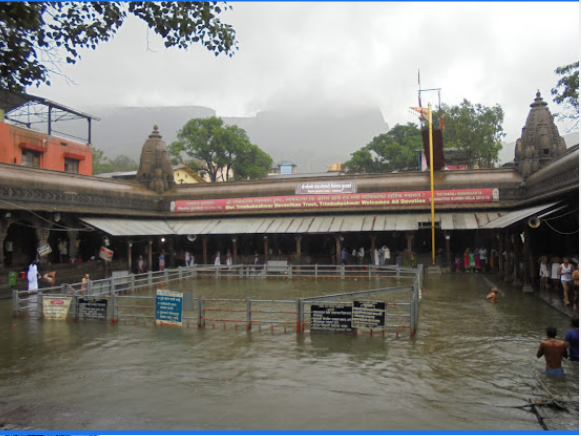
Akshay Tritiya festival is celebrated as Parashuram Janmotsav in the world. On this day, kirtan is organized in the temple. This annual festival of the temple starts from Baishakh Pratipada and is celebrated with joy till Ashtami. According to scholars, Akshay Tritiya is also considered to be the beginning of the Treta Yuga.
The present form of the temple is believed to have been built around 1850. In past, Bhagwan Parshuram had meditated on the Neel mountains where is situated near Annapoorna Mata temple today.
During the month of January, the Rig Veda is recited in the temple and is concluded with 10 thousand mantras and havan.
Lord Parashuram was born in the Treta era. His parents are Mata Renuka and Bhrigu Srishti Maharishi Jamadagni . According to Kalki Purana, The tenth avatar of Lord Vishnu will be the Guru of Kalki and train him for the war.
Bhagwan Parashuram is being worshipped by Niyog Bhumihar Brahmin, Chitpavan Brahmin, Tyagi, Mohyal, Anavil and Nimboodiri Brahmin communities in the form of male or an establisher. Temple timings are 7am to 9 pm. To return to Index of contents, Click Here
References: https://www.vaikhari.org/108shivalaya.html https://shaivam.org/temples-of-lord-shiva/108-shiva-temples-of-kerala https://www.vaikhari.org/108durgalaya.html https://www.facebook.com/AgoraJohn/posts/108-durga-temples-in-kerala-created-by-lord-parasuramaaccording-to-the-legends-l/2042623249379855/ https://www.thekeralatemples.com/knowmore/108_sastha_temples.htm http://rajathathaskeralatemples.blogspot.com/2016/11/the-list-of-108-sastha-temples.html http://shanmatha.blogspot.com/2011/05/108-sasthalayangal.html

